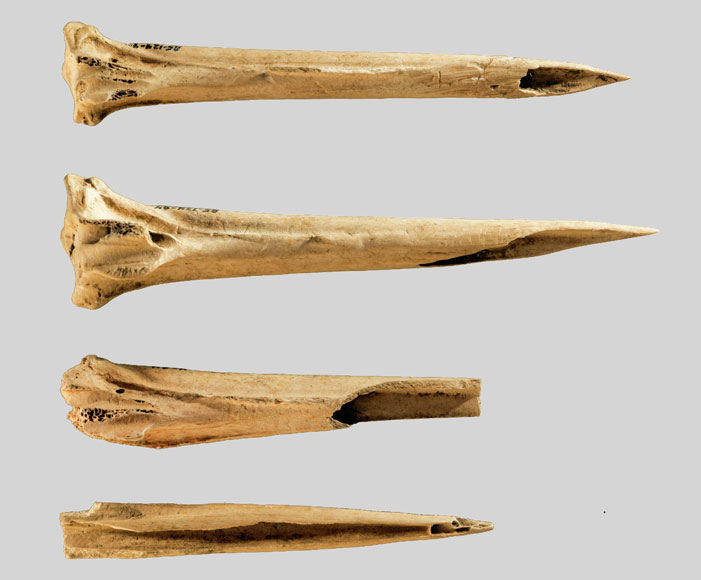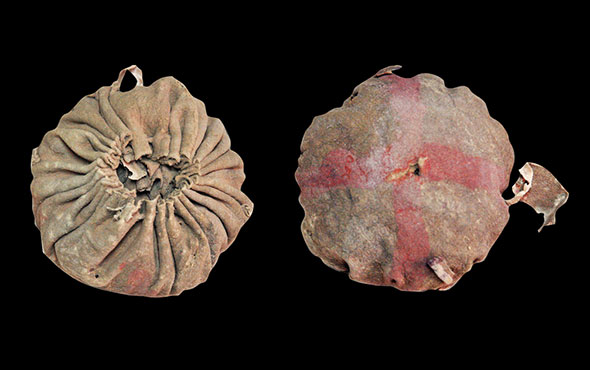
NASHVILLE, TENNESSEE—According to a Science News report, a new study of turkey bones unearthed in 1985 in a burial pit at the Fernvale site in central Tennessee suggests that they may have been used by Native Americans to make tattoos between 5,520 and 3,620 years ago. Archaeologist Aaron Deter-Wolf of the Tennessee Division of Archaeology said the age of the tools pushes back the practice of tattooing in North America by more than 1,000 years. Microscopic analysis of the sharpened, pigment-stained leg bones revealed marks resembling those left behind on sharpened deer bones during experiments to produce tattoos on slabs of pig skin in a previous study. Two turkey wing bones from the grave also bear microscopic wear and pigment residues, but lack sharpened tips, while pigment-stained seashells are thought to have held inky solutions. To read about an ancient tattoo needle found in Utah, go to "Artifact."










